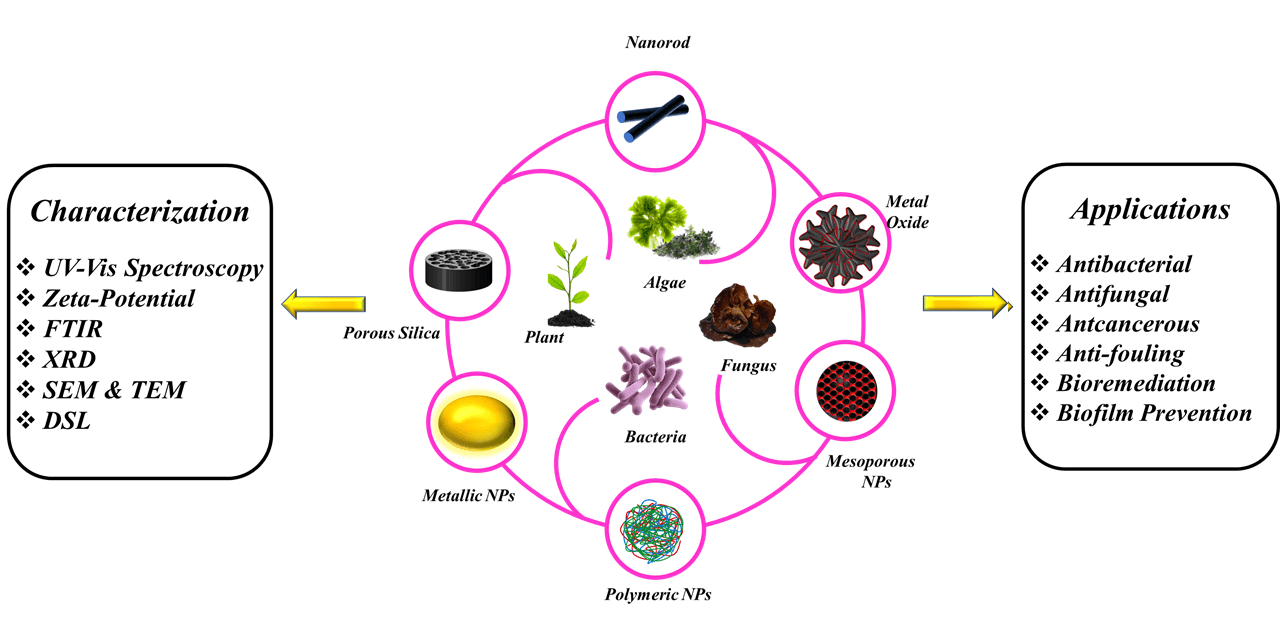 Open Access
Open Access
REVIEW
Synthesis of Metallic Nanoparticles Based on Green Chemistry and Their Medical Biochemical Applications: Synthesis of Metallic Nanoparticles
1
Department of Pharmaceutical Sciences, University of Kwazulu-Natal, Private Bag X54001, Durban, South Africa
2
Department of Chemical Pathology, School of Pathology, Faculty of Health Sciences, University of the Free State, Bloemfontein,
South Africa
3
Faculty of Pharmaceutical Sciences, University of Lubumbashi, Lubumbashi, Democratic Republic of Congo
4
Department of Biotechnology and Food Sciences, Durban University of Technology, Durban, South Africa
5
Department of Chemistry, M. Kumarasamy College of Engineering, Karur, Tamilnadu, India
6
Department of Botany, Mahatma Gandhi Central University, Motihari, Bihar, India
* Corresponding Authors: Anand Krishnan. Email: ; Ram Prasad. Email:
(This article belongs to the Special Issue: New Insights on Nanomaterials for Energy, Environmental and Agricultural Applications)
Journal of Renewable Materials 2023, 11(6), 2575-2591. https://doi.org/10.32604/jrm.2023.026159
Received 19 August 2022; Accepted 21 October 2022; Issue published 27 April 2023
Abstract
Nanoparticles have distinct properties that make them potentially valuable in a variety of industries. As a result, emerging approaches for the manufacture of nanoparticles are gaining a lot of scientific interest. The biological pathway of nanoparticle synthesis has been suggested as an effective, affordable, and environmentally safe method. Synthesis of nanoparticles through physical and chemical processes uses unsafe materials, expensive equipment and adversely affects the environment. As a result, in order to support the increased utilization of nanoparticles across many sectors, nanotechnology research activities have shifted toward environmentally safe and cost-effective techniques that outperform chemical and/or biological procedures. The use of organisms to produce metal nanoparticles is among the most frequently discussed methods. Plants appear to be the best candidates among these organisms for large-scale nanoparticle biosynthesis. Medicinal plants have been employed as reducing agents and NP stabilizers to minimize the toxicity of NPs in both the environment and the human body. Furthermore, the presence of certain functional components in plant extracts may be extremely useful and effective for the human body. Polyphenol, for example, which may have antioxidant properties, might intercept free radicals before they interact with other biomolecules and cause considerable damage. The current article analyzes the most recent developments and improvements in the green synthesis of metal nanoparticles by different plants and the use of these nanoparticles for various biomedical applications and hopes to provide insights into this exciting research frontier.Graphic Abstract

Keywords
Cite This Article
 Copyright © 2023 The Author(s). Published by Tech Science Press.
Copyright © 2023 The Author(s). Published by Tech Science Press.This work is licensed under a Creative Commons Attribution 4.0 International License , which permits unrestricted use, distribution, and reproduction in any medium, provided the original work is properly cited.


 Submit a Paper
Submit a Paper Propose a Special lssue
Propose a Special lssue View Full Text
View Full Text Download PDF
Download PDF Downloads
Downloads
 Citation Tools
Citation Tools